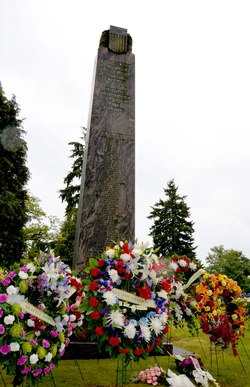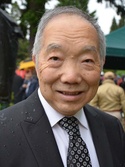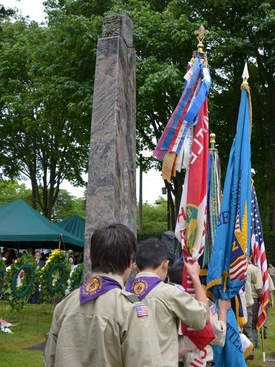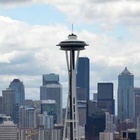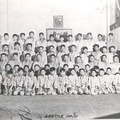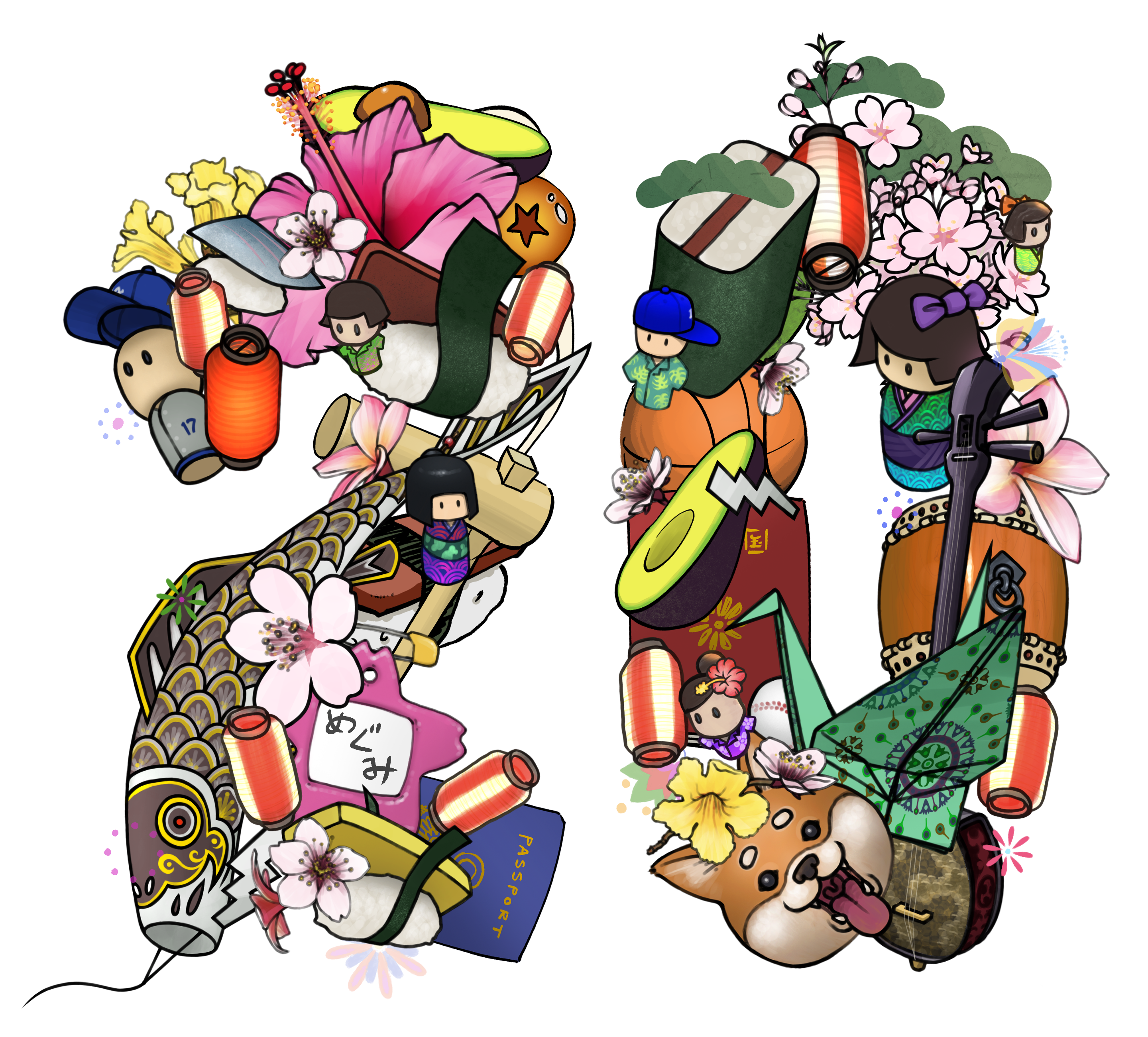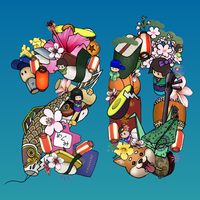The last Monday in May, Memorial Day, is a day to remember the brave fighting and sacrifices of Nisei soldiers in World War II. In Seattle, a memorial ceremony has been held at Lake View Cemetery since 1946, one year after the end of the war, but in recent years, as Nisei soldiers are aging, the government has been exploring whether to hold a memorial service for them.
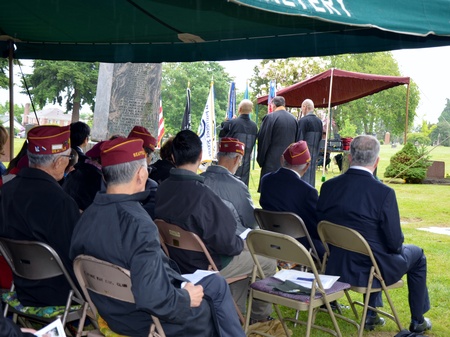
Erecting a memorial tower to mourn the sacrifice of our comrades
Ceremonies commemorating the deaths of Japanese soldiers on Memorial Day began the year after the end of World War II, but according to "Hokubei Hyakunen Sakura" (by Kazuo Ito), the remains of the soldiers had not yet returned to Seattle at that time. In order to welcome and honor their comrades who had given their lives, the Nisei who had returned from the war gathered volunteers and began a fundraising campaign to build a memorial tower. Donations far exceeded the goal in just 50 days, and the 21-foot-tall memorial tower was unveiled on Memorial Day, May 30, 1949, at Lake View Cemetery.
Currently, the names of 64 Japanese-American soldiers who died in the Spanish-American War, World War II, the Korean War, the Vietnam War, and the invasion of Grenada are inscribed on the tower, and every year on Memorial Day, second-generation veterans, surviving family members, and government officials lay wreaths in memory of them.
"The Nisei soldiers who died fought and even sacrificed their lives to prove that we Japanese Americans are true Americans and loyal to our country. I have come here to pay my respects to them and to mourn their sacrifice."
Herb Tsuchiya (80), whose four brothers served in the 442nd Regimental Combat Team and the Military Intelligence Service (MIS), has attended the memorial ceremony almost every year since it began.
The outbreak of war between Japan and the United States: Nisei soldiers headed to the front lines
When the Pacific War began in December 1941, Japanese Americans were labeled "enemy aliens," and those living in western Washington state were forcibly removed and sent to internment camps. The shock to the second-generation Japanese born in the United States was immeasurable, but even in such circumstances many second-generation Japanese swore loyalty to their homeland, and in Hawaii the 100th Infantry Battalion was formed by Japanese Americans in June of the following year, and the 442nd Regiment, also made up of Japanese Americans, began training in May 1943.
At the time of its formation, the 442nd, whose motto was "Go for Broke," had more than 2,500 members from Hawaii and about 1,300 from the mainland, most of whom were volunteers. This Japanese-American unit played an active role on the European front, including successfully rescuing the "Lost Battalion," which had been cut off from retreat and isolated in France. Meanwhile, second-generation Japanese who were fluent in Japanese were assigned to the MIS, where they served as interpreters and interrogators of prisoners of war on the Pacific front, including Okinawa and Iwo Jima, and are said to have hastened the end of the war.
However, these achievements came at a heavy cost, with the 442nd suffering a total of approximately 8,800 casualties, including 58 men from Washington state.
After the war, the Nisei soldiers who fought against prejudice and unequal treatment gradually came to be seen as heroes, and they were honored. Twenty-two of them*, including Corporal William Nakamura (died in 1944) and Specialist James Okubo (died in 1967), both from Washington state, were awarded the Medal of Honor in 2000, and in November 2011, the 100th Battalion, 442nd Regiment, and MIS were awarded the Congressional Gold Medal, the highest honor given by the U.S. Congress.
(*) Includes Asian soldiers other than Japanese
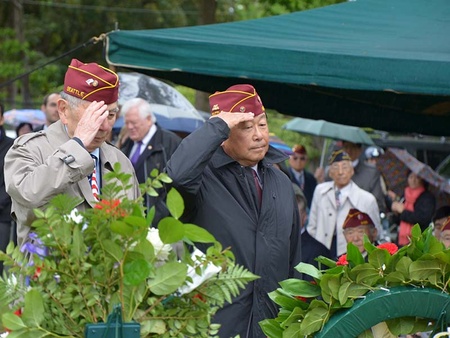
Aging of the second generation: Passing on to the next generation
The Nisei Veterans Association (NVC) has been honoring Japanese soldiers through memorial ceremonies, lectures, exhibitions, and other activities, but in recent years they have faced the issue of their members aging. They have once again emphasized the importance of passing on their knowledge to the next generation, and are developing various projects together with the NVC Foundation, which was established in 2005.
NVC Deputy Commander Dale Kaku said, "They died at a young age and were unable to advance their careers or grow their families. I believe their precious sacrifice was not only for this country, but also for us Japanese Americans, especially for the generations that will follow."
Unfortunately, this year's Memorial Day was hit by rain, and attendance was smaller than usual, but there were veterans and people with small children at the venue. At the long-running ceremony, Japanese politicians and community leaders sometimes give keynote speeches, expressing their intention to continue the achievements of Japanese soldiers while sharing the experiences of their own fathers and grandfathers. In addition, the members of the Boy Scouts of Seattle Betsuin Buddhist Church, who are responsible for raising the flag, are all Japanese.
Beyond Memorial Day, efforts to convey the achievements of Japanese-American soldiers continue in various directions. There are many movies and books about the 442nd Regimental Combat Team.
Tsuchiyama, mentioned above, is also a theater producer and actor, and says, "I want to tell the story of the second-generation soldiers through theater. I think it will be more accessible and memorable for the younger generation."
In 2010, the NVC completed a memorial wall listing the names of Japanese-American soldiers and regularly hosts a lecture series in which former soldiers talk about their experiences.
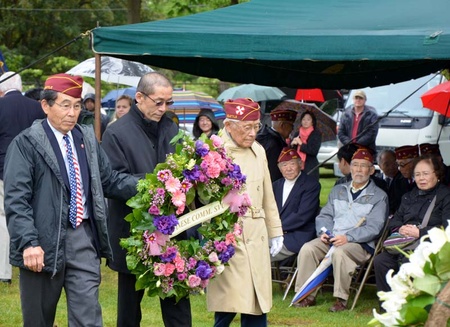
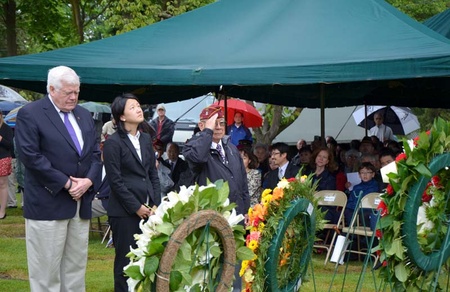
*This article is an edited version of an article published in the July 18, 2013 issue of North American News .
© 2013 Yaeko Inaba


